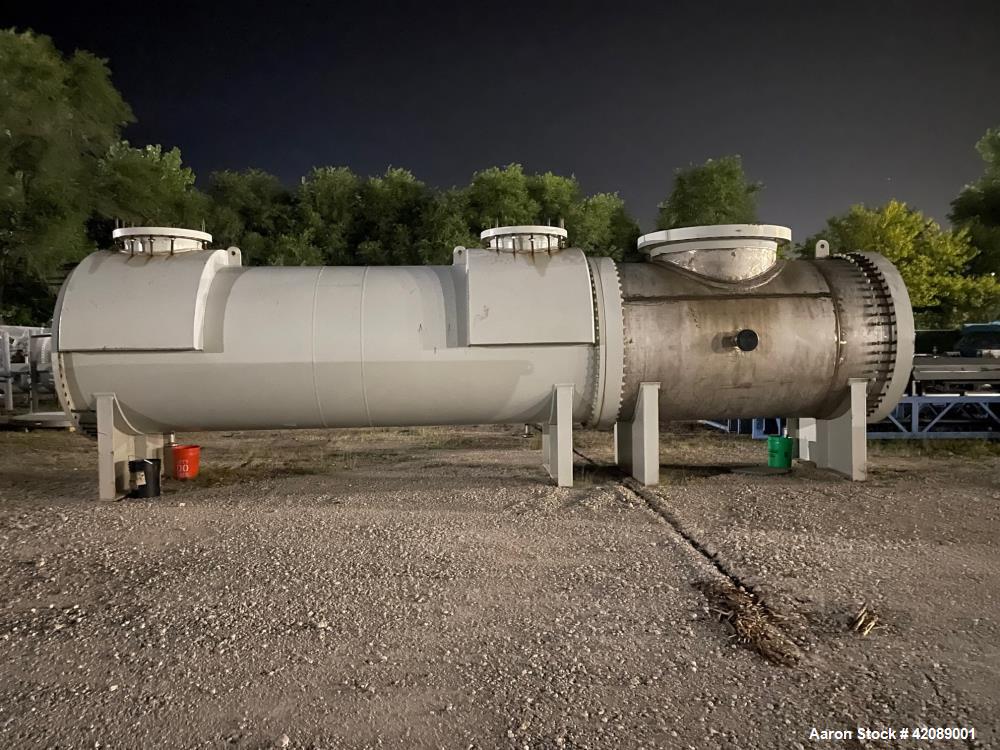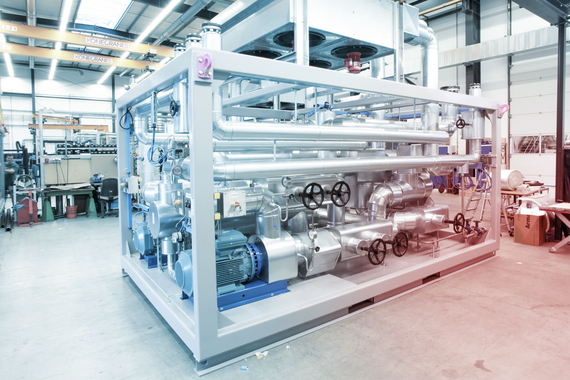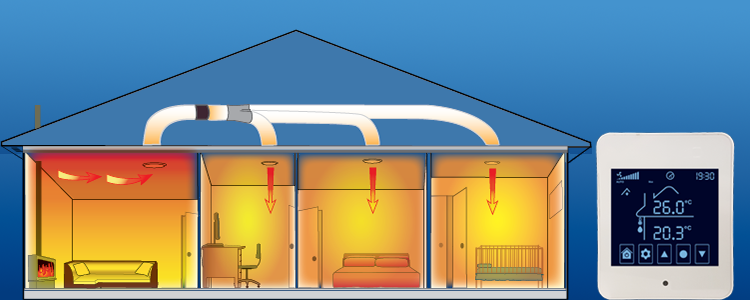Benefits of Choosing DVS Heat Transfer Systems for Compact Heat Exchanger Designs
A Comprehensive Overview to Choosing the Right Heat Transfer Solutions for Your Demands
Picking the appropriate Heat transfer system is important for operational performance. Different systems accommodate various requirements, influenced by factors such as temperature array and fluid type. Understanding the principles behind Heat transfer, such as radiation, convection, and transmission, is essential. Furthermore, reviewing energy sources and maintenance methods can impact lasting efficiency. A closer exam of these factors to consider exposes exactly how to tailor a system to certain requirements. What should one prioritize in this facility decision-making process?
Understanding Heat Transfer: Trick Principles and Principles
Although Heat transfer may appear like a straightforward idea, it incorporates a variety of concepts that are fundamental for effective system layout. Recognizing these concepts is necessary for developers and designers that intend to optimize thermal efficiency in various applications. Conduction, for example, involves the transfer of Heat via solid products, while convection refers to the movement of Heat within fluids. Radiation, an additional essential principle, explains exactly how Heat can be moved through electromagnetic waves. Each of these devices plays a crucial role in establishing just how power moves within a system. By thoroughly comprehending these concepts, professionals can make educated choices, ensuring that Heat transfer systems run effectively and meet the particular demands of their applications
Kinds of Heat Transfer Solutions: A Summary
Recognizing the concepts of Heat transfer prepares for exploring the various sorts of Heat transfer systems available. Heat transfer systems can be classified mainly right into three types: conduction, convection, and radiation. Conduction involves Heat transfer with strong materials, counting on straight call in between particles. Convection, on the other hand, occurs in fluids (gases and fluids) where the movement of the fluid itself facilitates Heat transfer. Radiation involves the transfer of Heat via electromagnetic waves and does not call for a tool, enabling it to take place in a vacuum cleaner. Each kind of system has unique features and applications, making it necessary for individuals and organizations to meticulously evaluate their certain demands when choosing the most ideal Heat transfer option.
Applications of Heat Transfer Solutions in Numerous Industries
Heat transfer systems play a crucial duty across numerous sectors, affecting effectiveness and product high quality. In industrial manufacturing processes, they facilitate accurate temperature control, while in food and beverage handling, they assure safety and preservation. In addition, heating and cooling and climate control systems count greatly on efficient Heat transfer to keep comfortable environments.
Industrial Manufacturing Processes

Numerous commercial production procedures count heavily on effective Heat transfer systems to take full advantage of performance and boost item quality. In industries such as metalworking, Heat exchangers play an important duty in preserving ideal temperatures throughout welding, spreading, and creating. These systems guarantee uniform Heat distribution, which is crucial for achieving desired material residential properties. In the chemical manufacturing market, Heat transfer systems promote specific temperature control during responses, influencing yield and security. In textile manufacturing, effective Heat monitoring is vital for dyeing and ending up processes, affecting shade consistency and fabric quality. By choosing ideal Heat transfer innovations, suppliers can improve energy effectiveness and lower functional prices, eventually bring about a much more competitive and sustainable manufacturing environment.
Food and Drink Processing
Reliable Heat transfer systems are equally essential in the food and drink processing industry, where preserving ideal temperatures is crucial for food security and high quality. These systems play a vital role in processes such as sterilization, food preparation, and pasteurization, guaranteeing that products are risk-free for consumption and maintain their nutritional worth. Heat exchangers, for example, successfully transfer Heat between fluids, optimizing energy use while lessening temperature changes. Additionally, refrigeration systems are basic for maintaining disposable products and expanding life span. The option of Heat transfer innovation straight affects operational effectiveness and item honesty, making it imperative for food and drink suppliers to choose the proper systems customized to their specific processing demands. This cautious choice inevitably contributes to customer fulfillment and food safety and security.

A/c and Climate Control
While lots of markets count on Heat transfer systems for performance, A/C (Heating, Air Flow, and Cooling) plays a crucial function in preserving indoor climate control throughout various setups. These systems make use of Heat transfer concepts to regulate moisture, temperature level, and air top quality, making sure comfort and security in property, business, and commercial environments. Properly created heating and cooling systems enhance power performance, minimize operational costs, and decrease environmental impact. In business buildings, for example, efficient climate control adds to employee productivity and client fulfillment. In commercial applications, a/c systems help preserve excellent conditions for equipment procedure and item preservation. Choosing the best Heat transfer system is essential for conference details climate control needs and accomplishing general system efficiency.
Reviewing Power Resources for Heat Transfer Solutions
In examining energy resources for Heat transfer systems, a comparison of eco-friendly energy alternatives and fossil gas considerations is necessary. Eco-friendly sources, such as solar and wind, offer sustainable alternatives that can decrease environmental influence. Alternatively, nonrenewable fuel sources remain common because of their established framework and power thickness, triggering a cautious evaluation of both choices.
Renewable Resource Options

Fossil Gas Considerations
Assessing nonrenewable fuel source considerations is necessary for the efficiency and sustainability of Heat transfer systems. Fossil gas, such as all-natural gas, oil, and coal, are standard power sources that supply significant Heat result, making them popular options for domestic and informative post commercial applications. Their environmental effect, including greenhouse gas discharges and source exhaustion, elevates issues. When selecting a warmth transfer system, it is crucial to assess the accessibility, price, and regulative factors associated with these fuels. Furthermore, the efficiency of nonrenewable fuel source systems should be thought about, as higher efficiency can minimize some environmental downsides. Inevitably, a balanced approach weighing efficiency and sustainability can assist decision-makers towards one of the most ideal Heat transfer remedy for their certain requirements.
Factors to Consider When Choosing a Warmth Transfer System
Selecting a proper Heat transfer system calls for cautious consideration of numerous aspects that can significantly impact effectiveness and performance. One vital aspect is the operating temperature level array, which determines the products and style appropriate for the application. Additionally, the kind of fluid utilized in the system-- whether gas or fluid-- affects Heat transfer efficiency and compatibility. The system's size and ability have to line up with the certain needs of the operation to avoid ineffectiveness. Energy source schedule is also essential, affecting operating expense and sustainability. In addition, the setup environment, including space constraints and availability for upkeep, plays a significant duty in system choice. Lastly, regulatory conformity and safety criteria need to be taken into consideration to guarantee the system fulfills all legal requirements.
Maintenance and Performance Optimization for Heat Transfer Systems
Maintaining Heat transfer systems is crucial for making certain optimal performance and longevity. Routine upkeep activities, such as cleaning Heat exchangers and evaluating insulation, assistance stop efficiency losses because of fouling and thermal linking. Additionally, monitoring system criteria, consisting of pressure and temperature level, permits early detection of anomalies, decreasing downtime and expensive repair services. Applying a precautionary upkeep timetable can maximize performance and extend the life expectancy of components. Moreover, upgrading to innovative control systems can improve functional efficiency browse around this web-site by adapting to differing problems and tons. By focusing on upkeep and efficiency optimization, operators can achieve lowered energy intake, lower functional prices, and boosted total system reliability, inevitably resulting in far better resource usage and a more lasting procedure.
Future Fads in Heat Transfer Technologies
As industries increasingly focus on sustainability and energy efficiency, future patterns in Heat transfer modern technologies are readied to go through considerable improvements. Innovations such as advanced materials, consisting of carbon nanotubes and nanofluids, assure enhanced thermal conductivity and effectiveness. Furthermore, the assimilation of eco-friendly power sources into Heat transfer systems is gaining momentum, promoting environment-friendly solutions. Smart innovations, including IoT sensing units, are anticipated to transform monitoring and control, enabling real-time data analysis for enhanced performance. The development of compact and modular systems will assist in less complicated installation and maintenance, catering to varied applications. These advancements show a change in the direction of even more lasting, efficient, and adaptable see post Heat transfer services, straightening with worldwide energy objectives and ecological requirements.
Often Asked Inquiries
What Are the Ecological Effects of Heat Transfer Solutions?
The ecological impacts of Heat transfer systems can include greenhouse gas discharges, energy intake, and possible thermal contamination. Additionally, incorrect disposal of inadequacies and materials can add to resource exhaustion and environment disturbance.
Just how Do I Compute the Cost-Effectiveness of a Warm Transfer System?
To calculate the cost-effectiveness of a heat transfer system, one must assess first costs, functional costs, upkeep requirements, and energy efficiency, contrasting these aspects against the expected life-span and performance of the system.
Can Heat Transfer Equipment Be Used in Residential Settings?
Heat transfer systems can undoubtedly be utilized in household setups. They offer efficient home heating and cooling down services, making homes much more comfy while potentially reducing energy prices. Their flexibility allows for numerous applications in property settings.
What Safety And Security Laws Relate To Heat Transfer Solutions?
Safety and security policies for Heat transfer systems generally consist of standards on installation, operation, and upkeep. Conformity with neighborhood building regulations, supplier requirements, and sector criteria is important to guarantee reliable and secure system efficiency in different applications.
How Do Different Products Affect Heat Transfer Efficiency?

Conduction, for circumstances, includes the transfer of Heat with solid materials, while convection refers to the movement of Heat within fluids. Comprehending the concepts of Heat transfer lays the foundation for exploring the various kinds of Heat transfer systems available. Heat exchangers, for circumstances, effectively transfer Heat between liquids, maximizing energy use while reducing temperature changes. In assessing energy sources for Heat transfer systems, a comparison of eco-friendly energy alternatives and fossil gas factors to consider is vital. Metals, such as copper and light weight aluminum, conduct Heat efficiently, whereas insulators like rubber and glass reduce down Heat flow.